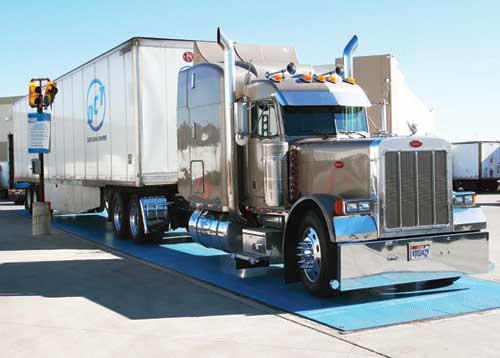The highest fuel prices ever seen in February combined with recent economic contraction do not bode well for the short-term outlook for the tradeshow transportation industry, which so far has seen a drop in business.
“This year is young. But, so far, it is down,” said Matthew DellOrto, director of sales and logistics, Globex Logistics. “Folks are looking to get ahead of the curve, but there has been a drop so far this year.”

High fuel costs are a big part of the problem. On Feb. 19, AAA reported the average price for a gallon of regular unleaded gasoline was $3.75, which was the highest average ever recorded on that date and had risen 32 straight days. Diesel fuel posted a national average of more than $4.13 as of Feb. 19.
What is causing the high gas prices? A political and economic mess largely caused by dysfunction among federal lawmakers, according to the American Trucking Associations (ATA). The ATA represents some 50 trucking organizations across the nation and is among the largest organizations of its type.
“Three of our nation’s biggest problems are the sluggish economy, a very dysfunctional federal government and the people of this nation who lack confidence that the economy will get better and that our government, as its currently assembled in Washington, isn’t capable of getting the job done,” said Bill Graves, president and CEO, ATA, during the association’s annual conference.
Compounding the problem of high fuel prices is the problem of congestion, which cost the transportation industry dearly in 2011, according to a recent study by the Texas A&M Transportation Institute. Entitled the “2012 Urban Mobility Report,” the study indicates traffic congestion cost businesses and individuals some $121 billion due to 2.9 billion gallons in wasted fuel and 5.5 billion hours of additional travel times in nearly 500 urban centers across the U.S.
With record high gas prices and costly congestion slowing things down, it only makes sense exhibitors are taking a careful look at what, where and how they go about transporting their displays and other goods to their tradeshow destinations.
“It’s certainly affecting folks’ budgets,” said DellOrto. “Obviously, it’s going to increase costs, especially for big exhibits. The folks doing mobile exhibits that are on the road all the time will also lose money they could have used elsewhere.”
For transportation firms and the exhibitors doing business with them, they will have to change how they do business with differing approaches for short-term survival and long-term success. Companies looking for quick advancements or rapid changes to address the many challenges impacting the transportation industry will likely be frustrated by the rate of change.
“Change in our industry happens slowly. So, if you’re in a hurry for something to happen, you might be frustrated with the pace of change,” said Graves. “In almost every instance, our past is a very good indicator of what our future will hold – and this industry’s past is certainly a story of growth, success and profitability,” said Graves. “Those unwilling to embrace change will not survive. As unpleasant as that option may be, it’s simply a truth that has always confronted the industry.”
Increased transportation costs necessitate new business strategies and tactics. And for many domestic exhibitors, that means lightening the load to reduce costs. Smaller and lighter displays have replaced much of the large, bulky booth structures of past tradeshows.
“A lot of folks have gone away from the big booths with office space,” said DellOrto. “We’re seeing more open booths with fabric. They are lighter loads. Even doing air-blown structures. We’re still shipping their products, but the large booth structures have gone away.”
Record high fuel prices are having a definite impact on the tradeshow industry, but so is a relatively weak U.S. dollar. A weak dollar is troublesome for domestic exhibitors. But overseas exhibitors often times can take advantage of the economic benefits of a weak U.S. dollar.
“Whenever our economy is down, we get more foreign exhibitors coming to the U.S.,” said DellOrto. “When the dollar is down, it makes it more affordable for them to come here.”
While it has become more affordable for overseas exhibitors to ship their displays to the U.S., a combination of relatively high transportation costs and the availability of suitable production facilities and labor forces overseas has changed the way domestic exhibitors transport goods for overseas shows.
“Years ago, the bigger companies did custom builds and shipped them – ship-and-store,” said DellOrto. “But more folks are using foreign firms where they can build them there. You can just send your design overseas as opposed to building a big exhibit and shipping it.”
Although the nature of the kinds of loads the tradeshow industry generally ships has changed in recent years, the need for trucking and other types of transportation remains strong over the long run. But, in the meantime, tightened transportation budgets and increased costs likely will be the norm.
“The essentiality of the industry and the demand for freight movement by truck – a growing demand for freight movement by truck – is unquestioned,” said Graves. “The long-term macro outlook for trucking has never been better, but the near-term micro view continues to be very challenging.”






























